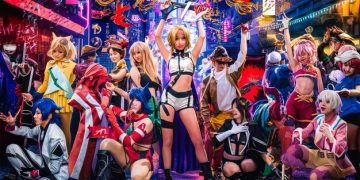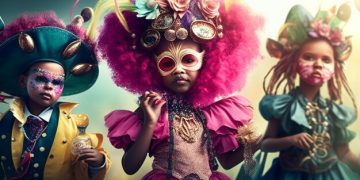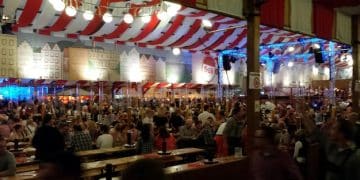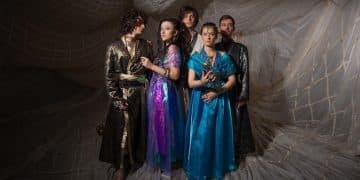Cosplay: Expressing Identity and Creativity in Geek Culture
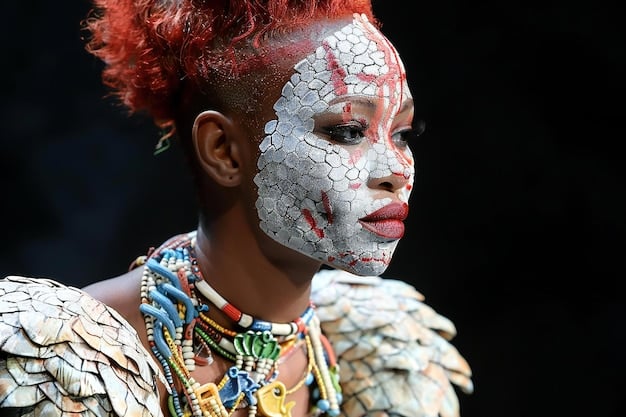
Cosplay, short for “costume play,” is a performance art where individuals create and wear costumes to embody specific characters, often from popular media like anime, comics, and video games, offering a unique avenue for self-expression and community engagement within geek culture.
Dive into the vibrant world of cosplay, where costumes become conduits for self-expression and community bonding. This guide explores the art, craft, and culture of cosplay, offering insights for both beginners and seasoned enthusiasts.
What is Cosplay? Unveiling the Art of Costume Play
Cosplay, or “costume play,” is more than just dressing up. It’s a performance art, a craft, and a way to connect with like-minded individuals. It involves embodying a character through meticulously crafted costumes and performances.
Cosplay has evolved from niche hobby into a global phenomenon. Let’s break down the core elements that define this unique form of creative expression.
The Essence of Cosplay: Beyond the Costume
While the costume is central to cosplay, it’s not the whole picture. Here are key elements:
- Character Embodiment: Stepping into the character’s shoes, adopting their mannerisms, and understanding their personality.
- Craftsmanship: The skill and artistry involved in creating or modifying costumes and props.
- Performance: Presenting the character through posing, acting, and interacting with others.
- Community: Connecting with fellow cosplayers, sharing knowledge, and celebrating the art form.
Cosplay offers a unique opportunity to not only admire a character but to embody them, adding a layer of personal interpretation to the beloved figures we see in our favorite shows and games.
The cosplay community is incredibly supportive, with seasoned cosplayers often sharing tips and techniques with newcomers, ensuring a welcoming and inclusive environment for all skill levels.
Cosplay Origins: From Fandom to Global Phenomenon
Cosplay’s roots can be traced back to science fiction conventions in the United States, gradually evolving into the global phenomenon we see today.
Understanding the history of cosplay helps appreciate its cultural significance and its continued evolution.
The Early Days: Science Fiction Fandom
The earliest forms of cosplay emerged from science fiction and fantasy fandom in the late 1930s and early 1940s:
- Forrest J Ackerman and Myrtle R. Douglas: Often credited as the “first cosplayers,” attending the 1939 World Science Fiction Convention in self-made costumes.
- Science Fiction League: Organized gatherings where fans would dress up as characters from their favorite stories.
These early cosplayers were pioneers, paving the way for the more elaborate and widespread practice that would develop in later decades.
Over time, cosplay steadily grew in popularity, with conventions and events providing dedicated spaces for cosplayers to showcase their creations. This evolution transformed cosplay from a niche activity into a core element of geek culture.

Crafting a Cosplay: Materials, Techniques, and Tips
Creating a cosplay costume involves a range of skills and techniques, from sewing and crafting to prop design and makeup artistry.
This section explores the essential elements of cosplay construction, offering guidance for cosplayers of all skill levels.
Essential Materials and Tools
Successful cosplay construction starts with the right materials and tools:
- Fabrics: Selecting appropriate fabrics for the character’s outfit, considering texture, weight, and durability.
- EVA Foam: A versatile material for creating armor, props, and other structural elements.
- Worbla: A thermoplastic material that can be molded and shaped for intricate details.
- Sewing Machine: For creating garments, altering patterns, and assembling fabric components.
Choosing the right materials for a project will also ensure the final product is durable, comfortable, and visually appealing.
Effective planning and resource management are essential for successful cosplay creation, ensuring that you have the necessary tools and materials readily available throughout the construction process.
Navigating Cosplay Conventions: Etiquette and Best Practices
Cosplay conventions provide a unique social environment where cosplayers can showcase their creations, meet fellow enthusiasts, and participate in various activities.
Understanding convention etiquette and best practices will ensure a positive experience for everyone involved.
Convention Etiquette: Respect and Consideration
Demonstrates good behavior and contributes to a positive atmosphere:
- Consent: Always ask for permission before taking someone’s picture or touching their costume.
- Personal Space: Be mindful of personal space, especially in crowded areas.
- Costume Care: Be careful not to damage other people’s costumes, and avoid activities that could damage your own.
- Respect: Treat all cosplayers and attendees with respect, regardless of their skill level or background.
By following these guidelines, cosplayers can create a safe and enjoyable environment for themselves and others at conventions.
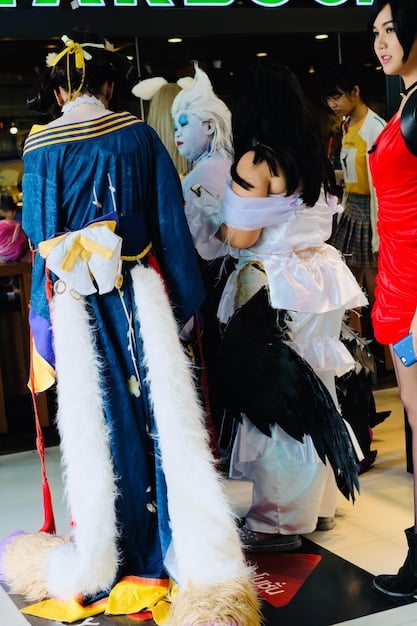
Attending various panels, workshops, and competitions offers diverse opportunities to learn new skills, network with other cosplayers, and stay abreast of industry trends.
Cosplay and Self-Expression: Finding Your Character
Cosplay offers a unique avenue for self-expression, allowing individuals to connect with characters that resonate with their identities and values.
Choosing a character to cosplay involves considering personal interests, skills, and the message you want to convey.
Choosing Your Character: Connecting with Identity
Allows individuals to embody characters:
- Personal Resonance: Selecting a character that you identify with on a personal level.
- Skill Level: Considering your skills and choosing a character whose costume is within your capabilities.
- Representation: Using cosplay to promote diversity and representation within geek culture.
By carefully selecting a character, cosplayers can use their costumes as a powerful form of self-expression, celebrating their unique identities and values.
Cosplay is a powerful tool for self-discovery and expression, allowing individuals to explore different facets of their identities through the embodiment of beloved characters.
The Future of Cosplay: Trends and Evolutions
Cosplay continues to evolve as technology and cultural landscapes shift, pushing the boundaries of creativity and innovation.
Embracing new technologies and promoting inclusivity will shape the future.
Advanced materials, such as 3D-printed components and programmable LEDs, enable cosplayers to create more complex and dynamic costumes.
The cosplay community is increasingly focused on promoting diversity and representation, ensuring that people of all backgrounds feel welcome and celebrated within the hobby.
Evolving technologies and a growing emphasis on inclusivity ensure that cosplay remains a vibrant and relevant art form for years to come.
| Key Aspect | Brief Description |
|---|---|
| 🎭 Definition | Cosplay is embodying a character through costume and performance. |
| 🧵 Craftsmanship | Involves sewing, prop making, and makeup artistry. |
| 🤝 Community | A supportive network for sharing knowledge and celebrating creativity. |
| ⭐ Self-Expression | Allows individuals to embody characters that resonate with their identity. |
Frequently Asked Questions
▼
The term “cosplay” is a portmanteau of “costume” and “play,” coined in Japan in the 1980s to describe fans dressing up as characters from manga, anime, and video games.
▼
Popular materials include EVA foam for armor, Worbla for thermoplastics, fabrics for garments, and various crafting supplies for props and accessories.
▼
Consider characters that you personally admire or connect with, accounting for your skill level and financial constraints, while ensuring it still excites you!
▼
Always ask for consent before taking photos or touching costumes, respect personal space, maintain awareness of your surroundings, and treat everyone with respect and courtesy.
▼
Start with simple projects, research tutorials and guides, connect with local cosplay communities, and attend conventions to learn from experienced cosplayers. Then you will be set to go!
Conclusion
Cosplay embodies a profound intersection of creativity, community, and self-expression, offering participants a unique avenue to embody characters, hone crafting skills, and forge lasting connections within the geek culture landscape.
